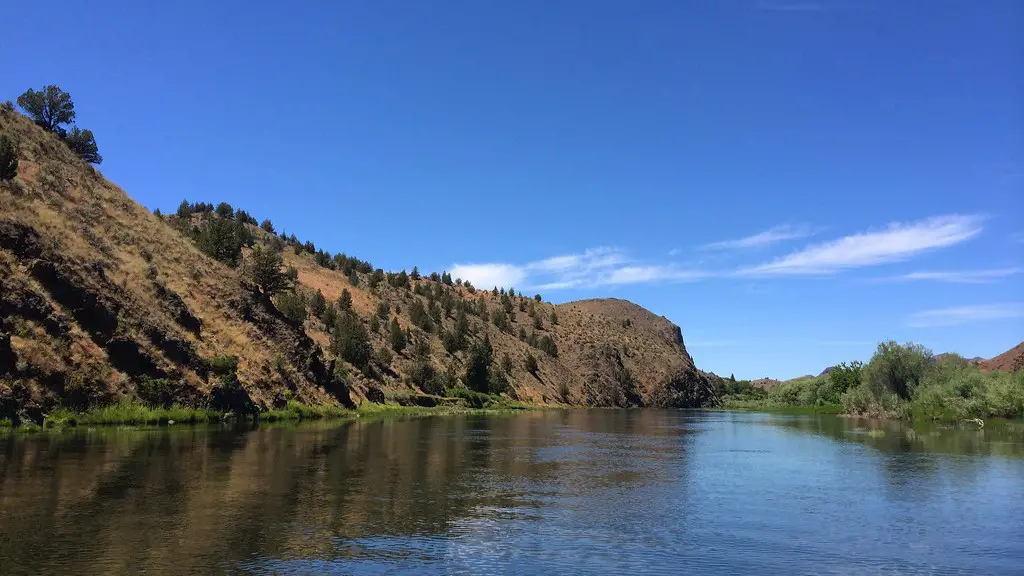Introduction
The Nile River Valley is an iconic geographic feature, renowned for its unique history, beauty, and resources. Its origins and importance to the continent of Africa have endured throughout the centuries, and today it remains an essential river basin. Spanning countries such as Egypt, Sudan, and Burundi, it is one of the longest rivers in the world and serves as an integral part of the continent’s economy and its cultural identity. This article will provide an overview of the location and significance of the Nile River Valley.
Physical Location and Features
The Nile River Valley is located in east-central Africa and spans 11 countries, including: Burundi, the Democratic Republic of the Congo, Egypt, Eritrea, Ethiopia, Kenya, South Sudan, Sudan, Tanzania, and Uganda. This river basin is the longest in the world, measuring 4,132 miles long.
The Nile River Valley also has a variety of other geographical features. There are three main tributaries that feed the Nile River: the White Nile, the Blue Nile, and the Atbara. Additionally, the valley is home to the Lake Victoria—the largest lake in Africa—as well as the Cataracts of the Nile, a series of waterfalls.
Economic and Cultural Significance
The Nile River Valley is an essential part of the African economy, providing food and water to millions of people throughout the region. Its water is used to produce crops, as well as in hydropower projects. Additionally, it serves as an important transportation route and provides employment to many people who use its waters as means to navigate and explore the continent.
The Nile River Valley is also deeply entrenched in African culture. The river has been a source of life for the region for thousands of years, and continues to be seen as a source of power, strength, and fertility. The water bodies are also deeply connected to mythology and mysticism, and many of Africa’s traditional religions are heavily tied to the river’s banks. It is a central figure in many African stories, poems, and songs.
Environmental Challenges and Conservation
Despite its beauty and importance, the Nile River Valley has faced a number of environmental challenges. Pollution from oil spills and industrial development, as well as increasing temperatures due to global warming, have wreaked havoc on the river’s ecosystem. Additionally, overpopulation and urbanization are putting a strain on the resources in the area.
In recent years, there have been a number of initiatives in the region to ensure the protection of the Nile River Valley. These efforts have included the creation of protected areas, the introduction of sustainable farming practices, and the construction of water dams to ensure an equitable distribution of resources. Despite these efforts, however, the region continues to face significant environmental issues.
Water Dispute between Egypt and Ethiopia
In recent years, the Nile River Valley has been at the center of a water dispute between Egypt and Ethiopia. Egypt has historically viewed the river as part of its own territory, and recently has advocated for the creation of an agreement that would guarantee it a larger share of the river’s resources. Ethiopia, on the other hand, has argued that the river should be shared equally between all countries in the region. After several years of negotiations, the two countries finally reached a settlement in 2020, which gave Ethiopia an equitable share of the river’s resources.
The settlement between Egypt and Ethiopia serves as a testament to the importance of the Nile River Valley to the countries in the region. The river has been a source of life for the continent for centuries, and it is essential for the long-term prosperity of the region. As such, it is essential that all countries take active steps to protect and sustain the resources of the river.
Tourism and Preservation Efforts
The Nile River Valley is also a popular tourist destination, offering a variety of attractions from ancient ruins to natural wonders. Tourists from around the world visit the region to enjoy its beauty and explore its historic sites. The region has also become increasingly popular as an ecotourism destination, with visitors looking to learn more about its unique environment, as well as to support conservation and sustainability efforts.
As the presence of tourism increases, there is a greater need for preservation efforts in the region. The local governments in the Nile River Valley have taken steps to protect and restore the environment, including the construction of nature reserves and the implementation of regulations to limit the pollution of the river. Additionally, international organizations such as UNESCO and the World Bank have provided assistance and support in efforts to preserve the area.
Impact on Local Communities
The Nile River Valley is home to a diverse array of cultures and people, from the nomadic tribes of the northern deserts to the ancient cities of the south. For many of these communities, the river is a source of sustenance and a way of life. It is essential for the continuation of cultural traditions and rituals, and the provision of basic needs such as food, water, and shelter.
Yet, these communities face many threats due to the environmental degradation of the river. Climate change is impacting the region, and increased temperatures and reduced rainfall are placing a strain on local resources. Additionally, industrial development and pollution are further disrupting the fragile ecosystem. As such, it is essential that local governments, as well as international organizations, work to protect and preserve the region.
Conclusion
The Nile River Valley is an extraordinary geographic feature and a key part of the history and culture of the African continent. It is an essential part of the region’s economy and a lifeline to many of its communities. Despite significant environmental challenges, there is much work being done to protect and preserve the river and its resources. It is only by continuing to work together that the region can ensure the long-term sustainability of the Nile River Valley.



